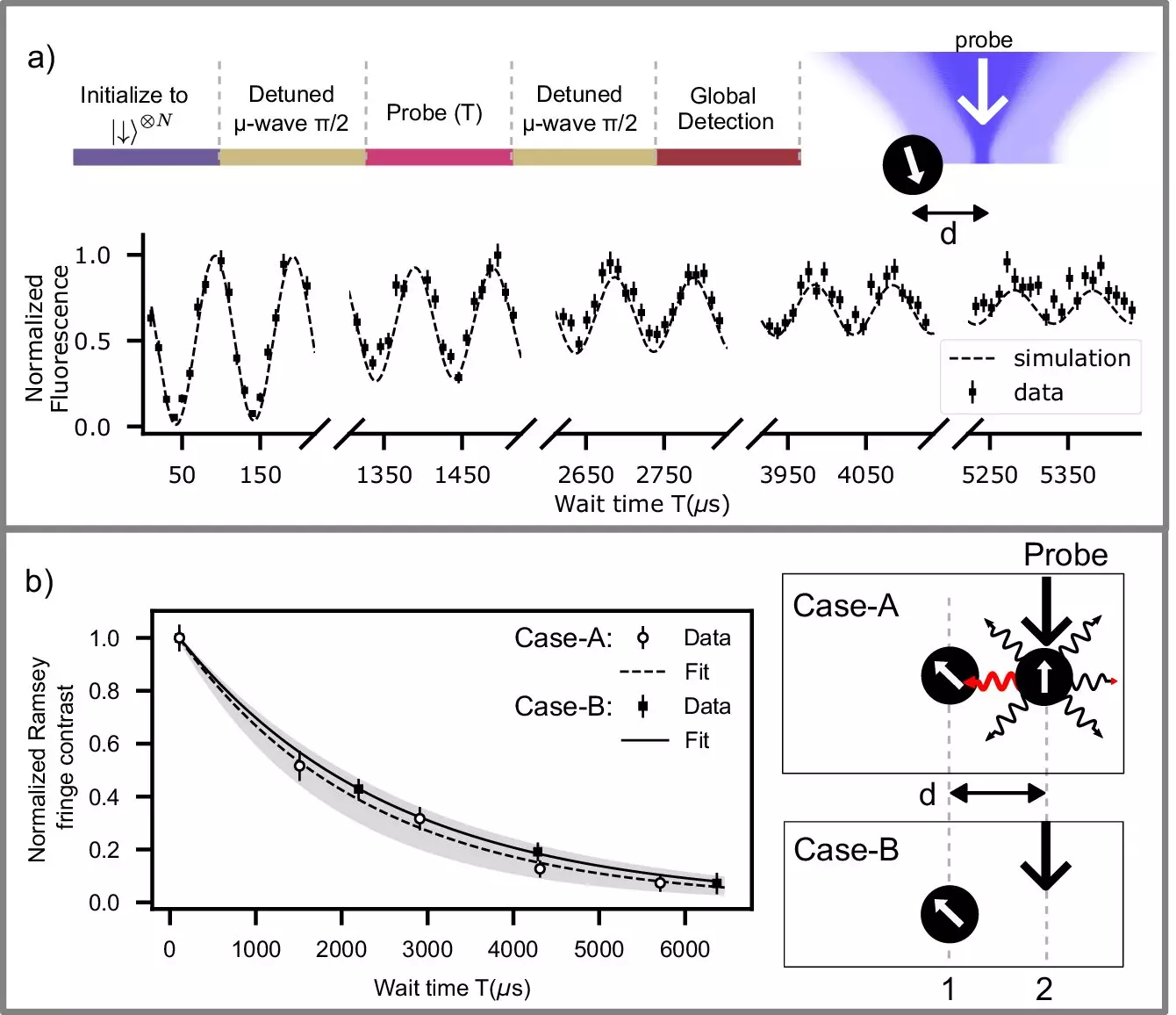In the realm of quantum computing, information encoded within quantum bits, or qubits, is notoriously delicate. These qubits can exist in multiple states simultaneously, allowing for unprecedented computational power, yet they also risk decoherence and information loss from even minimal disturbances. Thus, maintaining qubit integrity during operations is of paramount importance, particularly when considering processes that could inadvertently affect neighboring qubits. As quantum experiments advance, the challenge of conducting operations without compromising nearby data has become increasingly apparent, necessitating innovative methods for effective qubit control.
Research spearheaded by a team from the University of Waterloo, under the leadership of Dhruv Rajibul Islam, has offered promising solutions to these age-old problems. Their recent findings, published in *Nature Communications*, reveal a groundbreaking technique enabling the measurement and reset of a trapped ion qubit while preserving adjacent qubits from interference. This level of precision is astounding, as the measurements occur within a gap smaller than the width of a human hair—approximately 100 micrometers. The implications of this technique are far-reaching, opening new avenues in the development of advanced quantum processors and error correction protocols, essential for improving the reliability of quantum computation.
The research team’s method not only represents a theoretical advance but translates into practical application through their innovative use of holographic beam shaping combined with ion trapping technology. This synergy allows for the application of laser light with remarkable precision, overcoming what many believed to be insurmountable hurdles. The achievement confirms their hypothesis that it is indeed possible to manipulate a targeted qubit while safeguarding its neighbors’ information.
The team previously explored programmable holographic technology in a 2021 study, laying the groundwork for this current progression. Thanks to rigorous quantum theory calculations performed by motivated students, researchers realized the control over light could be refined further than initially believed, minimizing error rates and interference between qubits.
The Challenge of Crosstalk
An intrinsic challenge that arises during such precise qubit manipulation is crosstalk—a phenomenon where the manipulation of one qubit inadvertently affects its neighbors. Islam and his group navigated this issue by developing methods to direct laser light selectively, ensuring that even the scattered photons from the target qubit’s manipulation would not disrupt adjacent qubits. Achieving higher than 99.9% fidelity preservation for the qubit they aimed to protect during measurements underscores their successful navigation through this complex landscape of quantum interactions.
Rethinking Quantum Measurements
Historically, researchers believed that proximity between qubits would necessitate physical separation to prevent interference, often relocating qubits by hundreds of microns, resulting in delayed and noisy measurements. Islam’s assertion that such spatial distancing could be circumventered challenges established norms within the field. By focusing on fine-tuning the laser’s intensity and spatial control, they have not only proven the feasibility of their approach but have also stirred discussions around conventional beliefs regarding destructive measurement procedures.
Future Directions in Quantum Computing
The ability to conduct mid-circuit measurements with high fidelity and minimal disturbance represents a significant advancement for both current technologies and future quantum computing paradigms. Integrating this method with existing strategies could bolster error rates even further, making it a potent tool for researchers globally striving to enhance quantum computation’s capabilities.
Moreover, as interest in quantum computing surges across various industries, this breakthrough could facilitate numerous applications, from improved quantum simulations to the implementation of more robust error correction schemes. It elevates the bar for researchers who are increasingly tasked with harnessing qubit interactions for practical usage.
Ultimately, the University of Waterloo research group serves as a beacon of progress in the field of quantum information. Their work not only demonstrates a pivotal shift in understanding qubit manipulation but also inspires a re-evaluation of limitations previously deemed insurmountable. As technology continues to evolve, the strategies showcased here will likely catalyze further innovations, driving the quantum computing landscape into uncharted territories filled with potential. The era of fragile quantum states may be shifting towards one of precision and robustness, thanks to dedicated research and relentless inquiry.


Leave a Reply